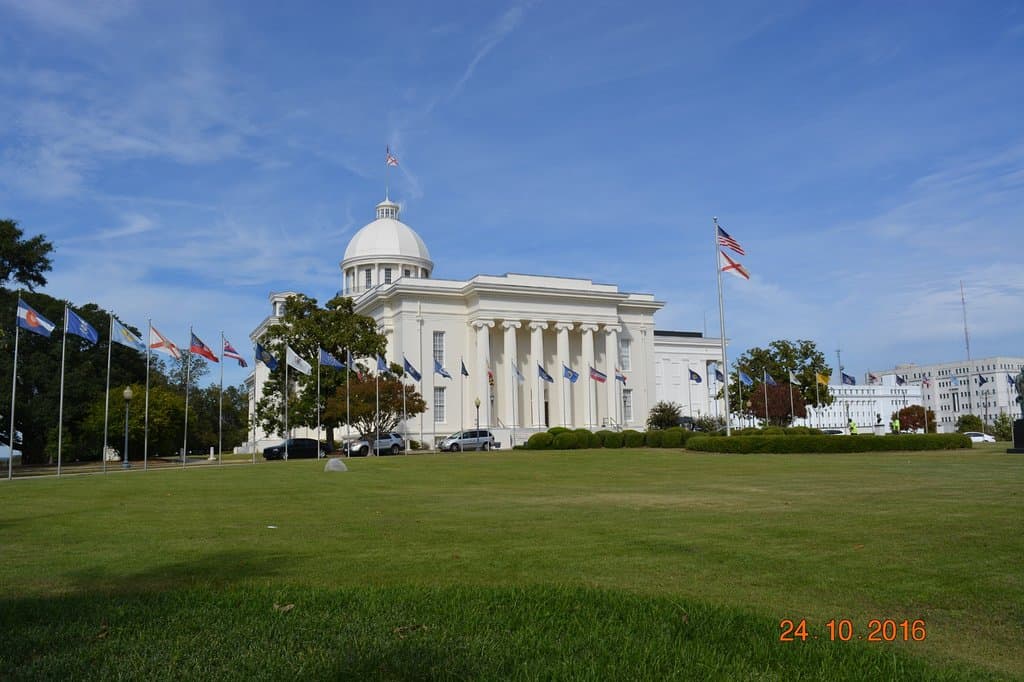Lowndes Interpretive Center Selma to Montgomery National Historic Trail
A vital stop on the Selma to Montgomery Trail, this center educates on the 1965 voting rights marches with powerful exhibits and historical context. [...
Highlights
Must-see attractions

Social
From TikTok & Reddit
Best Time
Fewer crowds, more reflective
Lowndes Interpretive Center Selma to Montgomery National Historic Trail
Best Time
Fewer crowds, more reflective
Highlights
Must-see attractions
A vital stop on the Selma to Montgomery Trail, this center educates on the 1965 voting rights marches with powerful exhibits and historical context.
"This venue is part of the National Park system. It provides a crucial piece of history as it highlights the Civil Rights movement in Selma. "
Watch the Intro Video First
It provides essential context for the exhibits. Don't skip it! :movie_camera:
Free Admission & Parking
Enjoy this important historical site without any cost. Plenty of space, even for RVs. :car:
Highlights
Discover the most iconic attractions and experiences
The Interpretive Center Exhibits
Main building
Engaging displays detailing the 1965 voting rights marches and their impact on civil rights.
The 25-Minute Informative Video
Theater room
A crucial introduction to the history and significance of the marches. Highly recommended by visitors.
The Historic Campsite
Six acres behind the center
The very ground where marchers camped overnight during their journey.
The Bookstore
Gift shop area
Well-stocked with relevant books and items related to the Civil Rights Movement.
Plans like a pro.
Thinks like you
Planning Your Visit
Understand the Significance
Timing Your Visit
Best Times
Insider Tips
from TikTok, Instagram & Reddit
Watch the Intro Video First
It provides essential context for the exhibits. Don't skip it! :movie_camera:
Free Admission & Parking
Enjoy this important historical site without any cost. Plenty of space, even for RVs. :car:
Passport Stamps Available
If you collect National Park Passport stamps, get yours at the front desk. :passport_control:
Connect with Park Rangers
They are knowledgeable and friendly, offering great insights. :man_teacher:
Tips
from all over the internet
Watch the Intro Video First
It provides essential context for the exhibits. Don't skip it! :movie_camera:
Free Admission & Parking
Enjoy this important historical site without any cost. Plenty of space, even for RVs. :car:
Passport Stamps Available
If you collect National Park Passport stamps, get yours at the front desk. :passport_control:
Connect with Park Rangers
They are knowledgeable and friendly, offering great insights. :man_teacher:
Reflect on the History
Take time to absorb the powerful stories of the Civil Rights Movement. :brave:
What Travellers Say
Reviews Summary
Visitors consistently praise the Lowndes Interpretive Center for its crucial historical exhibits and informative presentation of the Civil Rights Movement. The free admission, ample parking, and helpful park rangers are frequently highlighted as positive aspects. Some note that dining options are limited nearby, and the surrounding area of Selma has faced economic challenges.
"This Museum highlights the Civil Rights movement in Selma, where the 1965 peace March took place. Excellent exhibits, great bookstore. Full of very important history. Recommended!"
Brenda Adams
"This venue is part of the National Park system. It provides a crucial piece of history as it highlights the Civil Rights movement in Selma, specifically highway 80 which is where the historic Selma to Montgomery march took place in 1965. The exhibits are fantastic and the book store is stocked with very nice items.
There is plenty of free parking and restrooms are located in the venue."
Fred Thomas III
"Located on Highway 80 about 6 miles from the entrance to the Park. Very large building with a new sign out front SELMA to MONTGOMERY Interpretation Center and a National Park Service emblem. Another emblem is on the face of the building. Entry is from the parking lot side. If you have a National Park Passport the stamps are at the front desk in the gift shop. Plenty of parking for RVs and quite a few picnic tables offering a shady break. Entrance is free and the Museum is well laid out. Strongly encourage if you have time to step in and view the video. Quite a bit of history that is important to remember. What is interesting is the museum was built on its location for significant reasons. One being it has six acres that were used by the marchers to camp for the night on their march to Montgomery. The design of the museum is interesting - the front resembles the Brown Chapel African Methodist Episcopal Church and the dome symbolizes the Edmund Pettus Bridge. The bridge itself is 20miles to the right as you exit the Park toward Selma. There are statues and a small Park on the right at the bridge but parking is limited. More parking is available on the left side of the highway. The area with statues, plaques, etc. is to commemorate the Freedom Movement and those key leaders. However, probably due to city budget issues, the area is a bit worn out. Selma itself has fallen on hard times. However, if you have time you can use one of the handouts from the museum and drive past each of the churches where the marchers gathered and on Bloody Sunday sought refuge"
CHAOSNCHECK T
What People Like
What People Dislike
Frequently Asked Questions
🚇 🗺️ Getting There
The Lowndes Interpretive Center is located on Highway 80, about 6 miles from the entrance to the Selma to Montgomery National Historic Trail towards Montgomery. It's easily accessible by car, with ample free parking available, including space for RVs.
Yes, there is plenty of free parking available at the center, including dedicated spots for RVs.
Absolutely! The trail is a driving route along Highway 80, and the Lowndes Interpretive Center is a key stop along the way. Many visitors drive the route to experience the historical significance.
Many visitors recommend driving the trail and stopping at key points like the Lowndes Interpretive Center, the Edmund Pettus Bridge, and other historical markers. Watching the introductory video at the center is also highly advised.
Yes, the Lowndes Interpretive Center is part of the National Park Service and the Selma to Montgomery National Historic Trail.
🎫 🎫 Tickets & Entry
No, admission to the Lowndes Interpretive Center is completely free.
Operating hours can vary seasonally. It's best to check the official National Park Service website for the most up-to-date information on hours of operation before your visit.
No advance booking is required as the center is free to enter. You can typically visit during their operating hours.
Yes, you can get your National Park Passport stamps at the front desk, which is located in the gift shop area.
The center is designed to be accessible, with facilities like restrooms available. The exhibits are generally laid out to accommodate visitors.
🎫 🧭 Onsite Experience
You can explore exhibits on the 1965 voting rights marches, watch an informative 25-minute video, visit the bookstore, and see the historic campsite. Park rangers are also available to answer questions.
Most visitors spend about 1-2 hours here, especially if they watch the video and explore the exhibits thoroughly.
Yes, restrooms are conveniently located within the venue.
Yes, there is a well-stocked bookstore with items related to the Civil Rights Movement.
The museum's design is symbolic: the front resembles Brown Chapel AME Church, and the dome represents the Edmund Pettus Bridge. It was also built on a site historically used by marchers.
🍽️ 🍽️ Food & Dining
The center itself does not typically have a restaurant. However, there are picnic tables available if you wish to bring your own food.
Dining options are limited directly around the center. It's advisable to plan for meals in Selma or Montgomery, or pack a picnic to enjoy at the provided tables.
Yes, there are picnic tables available, offering a pleasant spot for a break.
📸 📸 Photography
Photography is generally allowed inside the exhibits, but it's always a good idea to check for any specific signage or ask a ranger if you're unsure.
Key photo spots include the exterior architecture, the historic campsite area, and potentially the exhibits themselves. The overall historical context provides powerful imagery.
Yes, the entire trail offers significant photo opportunities, including the Edmund Pettus Bridge, historical markers, and the landscapes that the marchers traversed.
Morning light can be beautiful for exterior shots, while indoor exhibits are best viewed during operating hours. Consider the historical significance when framing your shots.
For Different Travelers
Tailored advice for your travel style
👨👩👧 Families with Kids
Consider discussing the themes beforehand to prepare younger children. The free admission and ample parking make it an easy stop. The bookstore might have age-appropriate materials. Remember to utilize the picnic tables if you bring snacks or lunch, as dining options nearby are limited.
📚 History Enthusiasts
Don't miss the chance to walk the grounds of the historic campsite and appreciate the symbolic architecture. The bookstore is also a treasure trove for further reading. Engaging with the knowledgeable park rangers can provide additional context and answer specific historical questions.
🚗 Road Trippers
Make sure to allocate time for the 25-minute video as it sets the stage for the rest of your journey along the trail. The center provides a crucial historical context that will enrich your experience of the other sites, like the Edmund Pettus Bridge.
Deep Dives
In-depth insights and expert knowledge
The Selma to Montgomery National Historic Trail
Visitors can drive the trail, stopping at various interpretive centers and historical markers. The Lowndes Interpretive Center is one of these vital stops, providing context and historical detail about the events that unfolded along Highway 80. The trail is not just a physical route but a journey through a pivotal period of American history, highlighting the courage and resilience of those who fought for civil rights.
Experiencing the trail offers a profound connection to the past. Whether you're walking a portion of the route, visiting the sites where critical decisions were made, or learning about the challenges faced by the marchers, the trail serves as a powerful educational tool. It's a place to reflect on the sacrifices made and the progress achieved, reminding us of the ongoing importance of civil rights and civic engagement.
The Significance of the Lowndes Interpretive Center's Location
The architecture of the center itself is also symbolic. Its front facade is designed to resemble the Brown Chapel African Methodist Episcopal Church, a key organizing point for the marches in Selma. Furthermore, the dome of the center is a representation of the Edmund Pettus Bridge, another iconic landmark on the trail. This thoughtful design aims to immerse visitors in the historical narrative and connect them visually to the key locations of the movement.
By situating the interpretive center on this significant land and incorporating symbolic architectural elements, the National Park Service ensures that the Lowndes Interpretive Center is more than just a museum. It's a place where history is not only told but also felt, offering a tangible link to the past and a deeper understanding of the sacrifices made during the Civil Rights Movement.
Understanding the 1965 Voting Rights Marches
The first march, known as 'Bloody Sunday,' took place on March 7, 1965. Peaceful marchers attempting to cross the Edmund Pettus Bridge were brutally attacked by state troopers and local law enforcement. The violent images broadcast nationally shocked the country and galvanized support for the Civil Rights Movement. Subsequent marches, with federal protection, eventually reached Montgomery, highlighting the determination of the activists and the urgent need for federal intervention.
The Lowndes Interpretive Center serves as a crucial educational hub for understanding these events. It details the challenges faced by the marchers, the strategies employed, and the ultimate triumph of the movement in securing voting rights. The exhibits and the recommended video presentation offer a comprehensive overview, making it an essential stop for anyone seeking to learn about this transformative period in American history.



Social
from TikTok, Instagram & Reddit